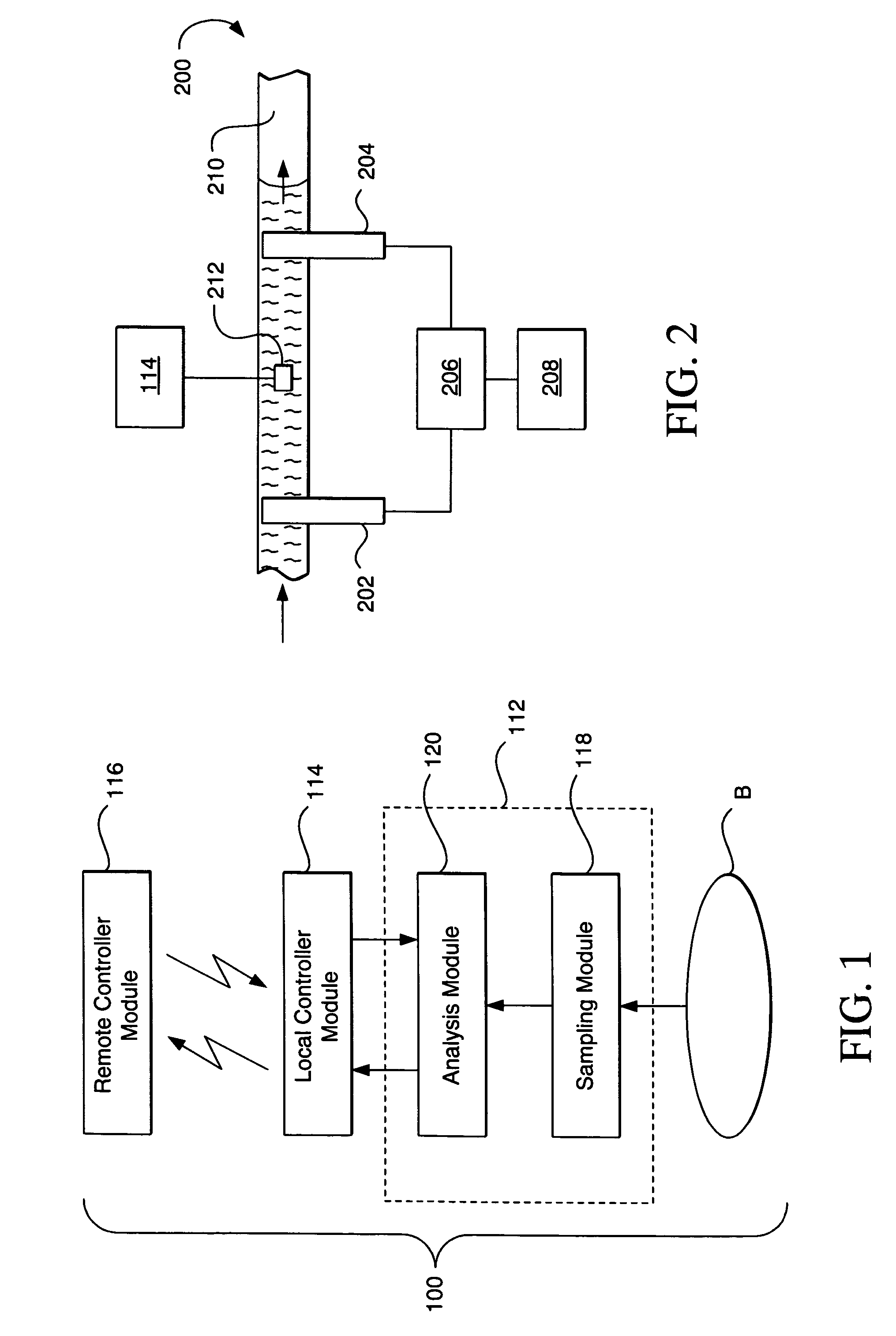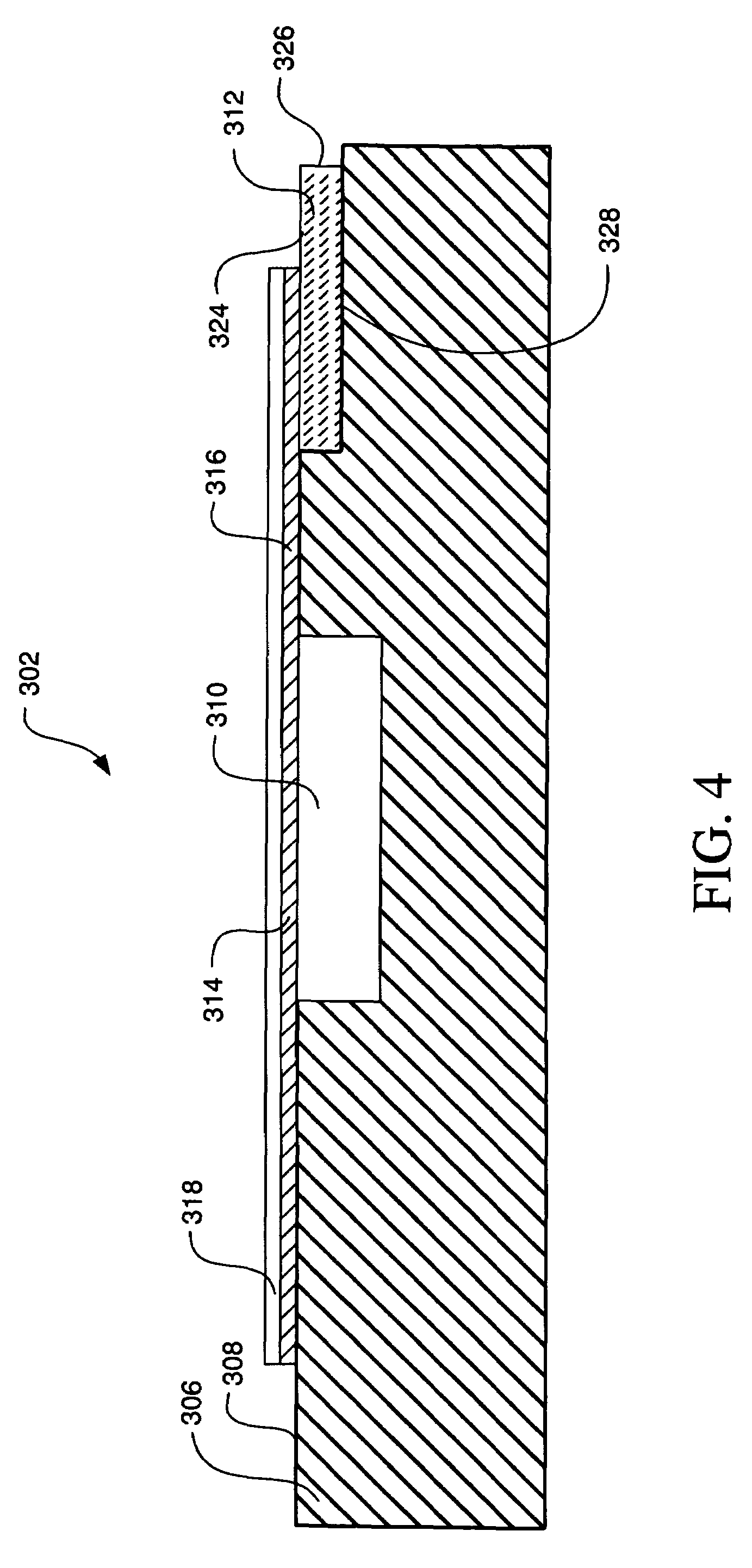Fusible conductive ink for use in manufacturing microfluidic analytical systems
a microfluidic and analytical system technology, applied in the field of analytical devices, can solve the problems of microchannels and surrounding structures, (s) and electrodes) can suffer from a lack of unified structural integrity, and control is problemati
- Summary
- Abstract
- Description
- Claims
- Application Information
AI Technical Summary
Benefits of technology
Problems solved by technology
Method used
Image
Examples
example
Manufacturing of an Analysis Module
[0058]An embodiment of a microfluidic analytical device according to the present invention was manufactured using an insulating substrate formed from a polystyrene material (i.e., Polystyrol 144C, commercially available from BASF, Aktiengesellschaft, Business Unit Polystyrene, D-67056 Ludwigshafen, Germany) and a laminate layer formed from another polystyrene material (i.e., Norflex® Film, commercially available from NSW Kunststofftechnik, Norddeutsche Seekabelwerke AG, 26954 Nordenham, Germany).
[0059]Electrodes and electrically conductive traces were printed on the laminate layer using a conductive ink. In addition, electrically conductive contact pads were printed on the insulating substrate using the same conductive ink. The conductive ink used to print the electrically conductive traces, electrically conductive contact pads and electrodes had the following mass percent composition:[0060]18.5% micronised powder containing platinum and carbon in ...
PUM
| Property | Measurement | Unit |
|---|---|---|
| volume | aaaaa | aaaaa |
| thickness | aaaaa | aaaaa |
| thickness | aaaaa | aaaaa |
Abstract
Description
Claims
Application Information
 Login to View More
Login to View More - R&D
- Intellectual Property
- Life Sciences
- Materials
- Tech Scout
- Unparalleled Data Quality
- Higher Quality Content
- 60% Fewer Hallucinations
Browse by: Latest US Patents, China's latest patents, Technical Efficacy Thesaurus, Application Domain, Technology Topic, Popular Technical Reports.
© 2025 PatSnap. All rights reserved.Legal|Privacy policy|Modern Slavery Act Transparency Statement|Sitemap|About US| Contact US: help@patsnap.com



